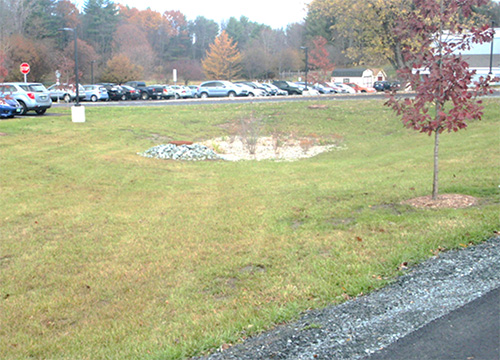Infiltration basins are open stormwater impoundments designed to capture and infiltrate the stormwater over several days but do not retain a permanent pool of water. The bottom of an infiltration basin typically contains vegetation to increase the infiltration capacity of the basin, allow for vegetative uptake, and reduce soil erosion and scouring of the basin. This BMP can receive both sheet flow and piped runoff discharged directly into the basin. Runoff gradually infiltrates into the underlying soil through the bottom of the basin, removing pollutants through sorption, trapping, straining, and bacterial degradation, or transformation. Infiltration basins may also be used to provide stormwater quantity control when designed as on-line facilities.
Infiltration basins are a cost-effective approach to managing stormwater where there is adequate space. Water is stored above the bottom of the basin rather than in subsurface storage media, which is more cost-effective than other infiltration approaches.

